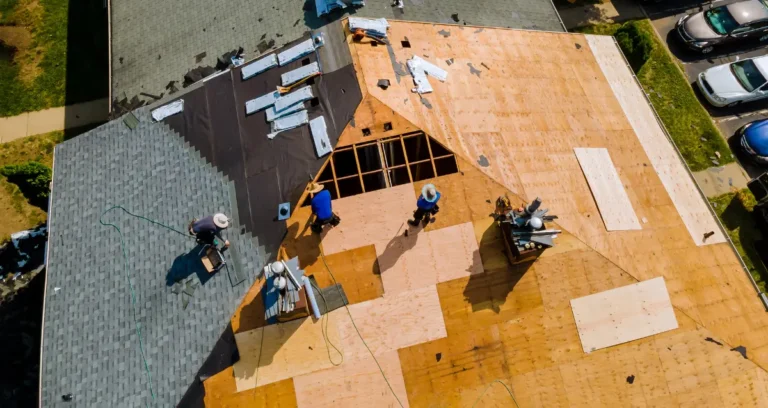How to Soundproof Any Wall for $200+ (DIY Budget Methods That Work!)
Soundproofing a space can seem like an expensive endeavor, with professional solutions often costing tens of thousands of dollars. However, with a little DIY know-how, you can significantly reduce unwanted noise without breaking the bank. This guide, inspired by a popular YouTube tutorial, breaks down cost-effective methods to soundproof walls for around $200 or more. Let’s explore practical and budget-friendly soundproofing strategies that address both airborne and structural noise.
Understanding Noise Types
Before diving into soundproofing techniques, it’s essential to identify the type of noise you’re dealing with:
- Airborne Noise: Sounds like voices, music, or TV that travel through the air.
- Structural Noise: Vibrations caused by footsteps, traffic, or bass-heavy music.
Different types of noise require different solutions. The methods below cover both.
1. Build a Double Wall
Building a double wall is one of the most effective ways to block both airborne and structural noise. Here’s how to do it:
How It Works
A double wall creates an air gap between two walls, which helps block vibrations and sound transmission.
DIY Steps:
- Materials Needed: 2×4 or 2×6 wooden studs, drywall (preferably 5/8-inch thick), insulation, putty pads for electrical outlets.
- Build a new wall frame in front of the existing wall, leaving a 2-3 inch air gap.
- Secure the frame to the floor and ceiling, ensuring it’s not attached to the existing wall.
- Install insulation within the new wall’s studs to absorb sound.
- Use putty pads to seal holes in electrical outlets or light switch boxes to reduce sound leakage.
- Attach drywall (5/8-inch for better noise reduction) to the new wall frame.
Cost Breakdown
For a 10×10 room, this project typically costs between $1,000 and $1,500 if done professionally. DIYing this project can save significantly on labor costs.
2. Add Mass Loaded Vinyl (MLV) and a Second Layer of Drywall
If building a double wall isn’t feasible, another effective solution involves adding Mass Loaded Vinyl (MLV) between two layers of drywall.
How It Works
MLV is a dense, rubber-like material that increases the wall’s density without adding significant thickness. It excels at blocking airborne noise.
DIY Steps:
- Apply a layer of MLV directly onto the existing drywall.
- Cover the MLV with a second layer of 5/8-inch drywall.
- Seal gaps around electrical outlets with acoustical sealant to prevent sound leakage.
Cost Consideration
While MLV adds to the budget, it’s far cheaper than hiring professionals for extensive modifications. Expect to pay $2-$4 per square foot for MLV.
3. Use Resilient Channels
Resilient channels are ideal for situations where space is limited, and they work exceptionally well for blocking structural noise like footsteps.
How It Works
Resilient channels create a “floating” wall or ceiling by decoupling the drywall from the studs, dissipating vibrations before they travel into the room.
DIY Steps:
- Attach resilient channels to the existing studs.
- Mount drywall onto the channels.
- Ensure proper installation for optimal results, as improper alignment can reduce effectiveness.
Benefits
- Minimal space loss.
- More affordable than building a double wall.
4. Soundproofing Doors and Small Gaps
For minor noise issues or for additional measures, consider soundproofing doors:
- Add weatherstripping or soundproofing seals to door frames.
- Install a door sweep to block gaps beneath the door.
These solutions are highly affordable, costing around $20 and can make a noticeable difference for minor soundproofing needs.
Pro Tips for Maximizing Soundproofing
- Seal all gaps: Sound travels through even the smallest cracks. Use acoustical sealant to block gaps around outlets, switches, and the edges of walls.
- Thicker drywall: Always opt for 5/8-inch drywall over standard 1/2-inch for better sound resistance.
- Combine methods: For the best results, use multiple soundproofing techniques together (e.g., resilient channels and MLV).
Conclusion
Soundproofing doesn’t have to cost tens of thousands of dollars. With a budget of $200 or more, you can achieve substantial noise reduction using DIY techniques like building a double wall, adding MLV and drywall, or installing resilient channels. These methods are cost-effective, practical, and can be tailored to your specific needs.
Whether you’re blocking out noisy neighbors or creating a quiet workspace, these strategies prove that effective soundproofing is accessible to anyone willing to put in a little effort.
Prices and material availability may vary depending on your location and the project scale. Always verify current costs before starting.







